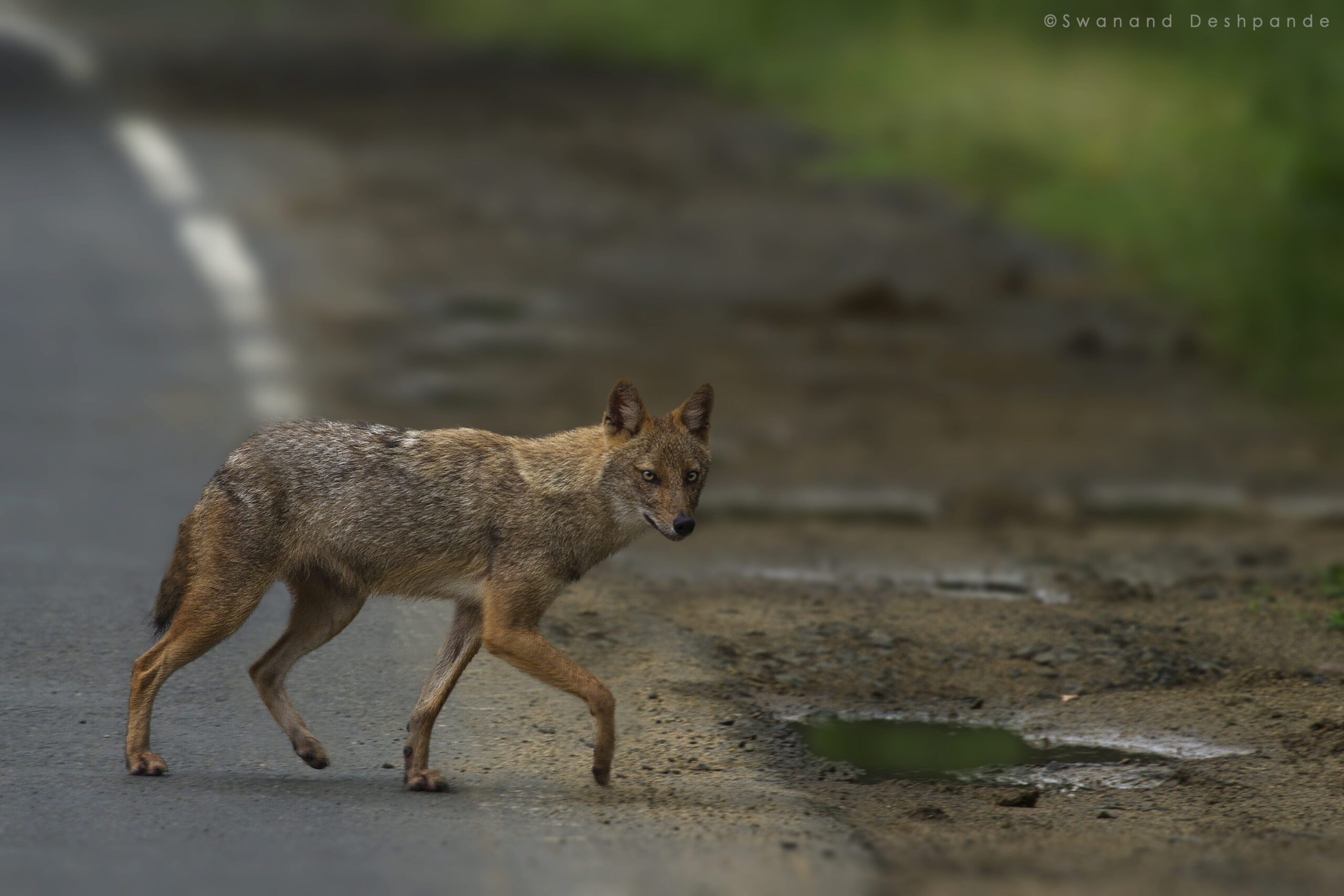The Indian subcontinent has only one species of Jackal i.e. Golden jackal. They are small-sized mammals as compared to their close relatives, wolves, and wild dogs. And as the saying goes “When the tiger kills, the jackal profits.” They are quite opportunistic feeders. Let’s find out more about the Golden Jackal in this article.
Golden Jackal (Canis aureus indicus)
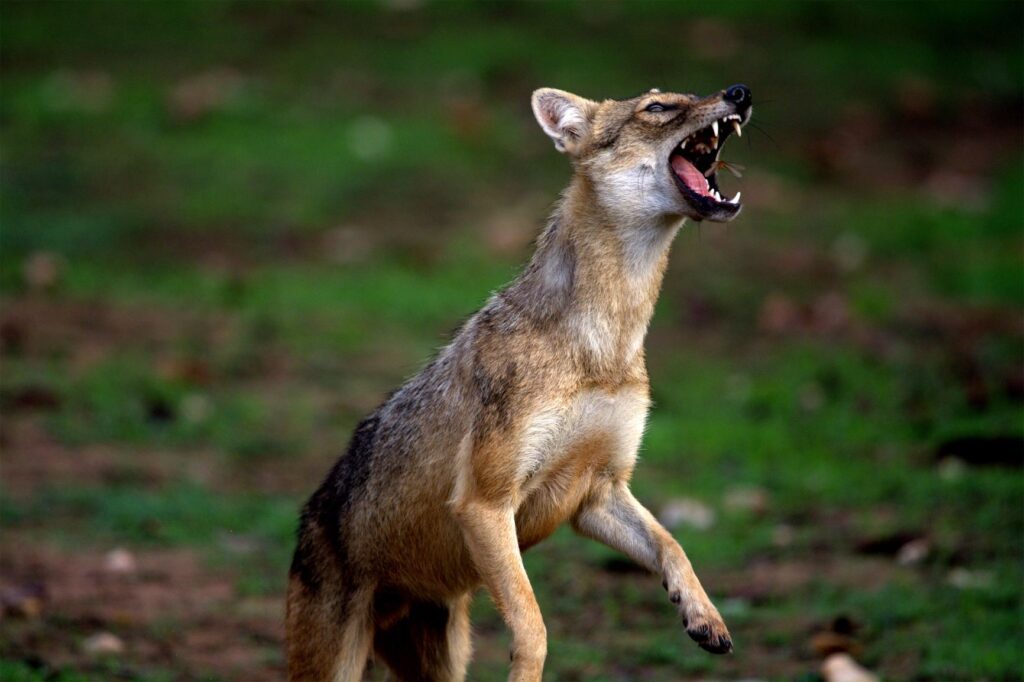
As the name suggests, the coat is golden brown with a bit of mottled fur in between. In winter, however depending on the region, a darker coat can be seen. They are quite widespread across India. Right from the Himalayan foothills, down to the Western Ghats; the Golden Jackal has a wide distribution.
The typical habitat of the golden jackal can be anywhere from dry deciduous forests, and semi-arid regions to agricultural lands and close to human settlement habitats.
Jackal in different languages:
Golden jackals, have a wider range of distribution and are also called by different names in different regions.
- In Hindi – Siyar/kakad
- In Marathi – Kolha/sake
- In Telegu – Nakka
- In Bengali – Kamṭhala
- In Kannada – Nari
Social behavior of Jackals:
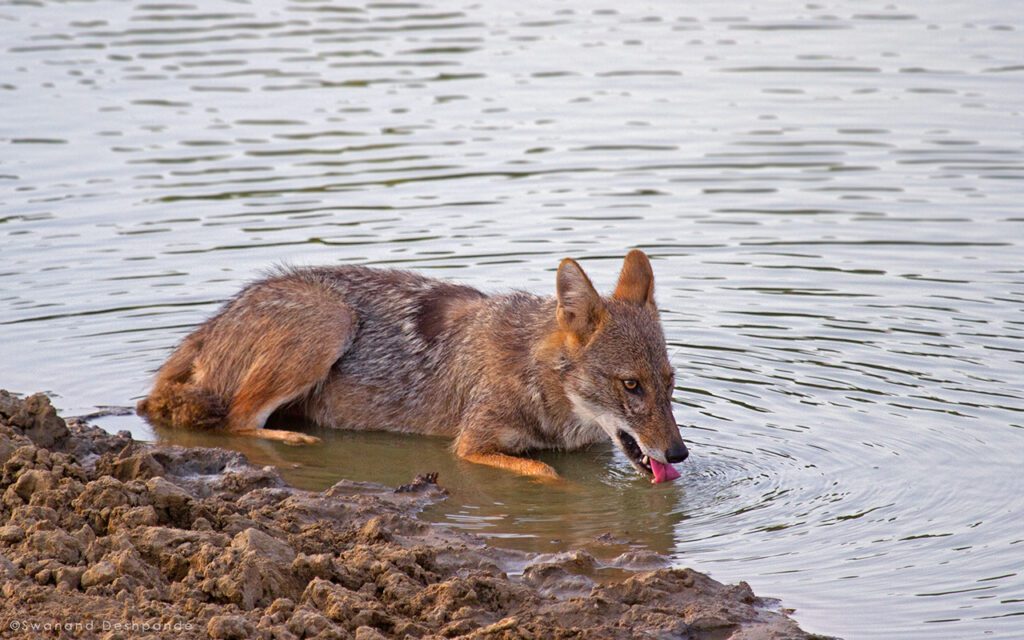
The Golden Jackals are generally not pack hunters and stay in pairs. The pair hunts and scavenges together. But there have been a few records of jackals in packs, mostly grown-up pups. These are monogamous species, so they will mate for life. The pups are reared in a den. However, a jackal will have multiple dens with multiple openings for a faster escape route. The pair will defend the territory together from other jackals.
Evolution of Golden Jackals:
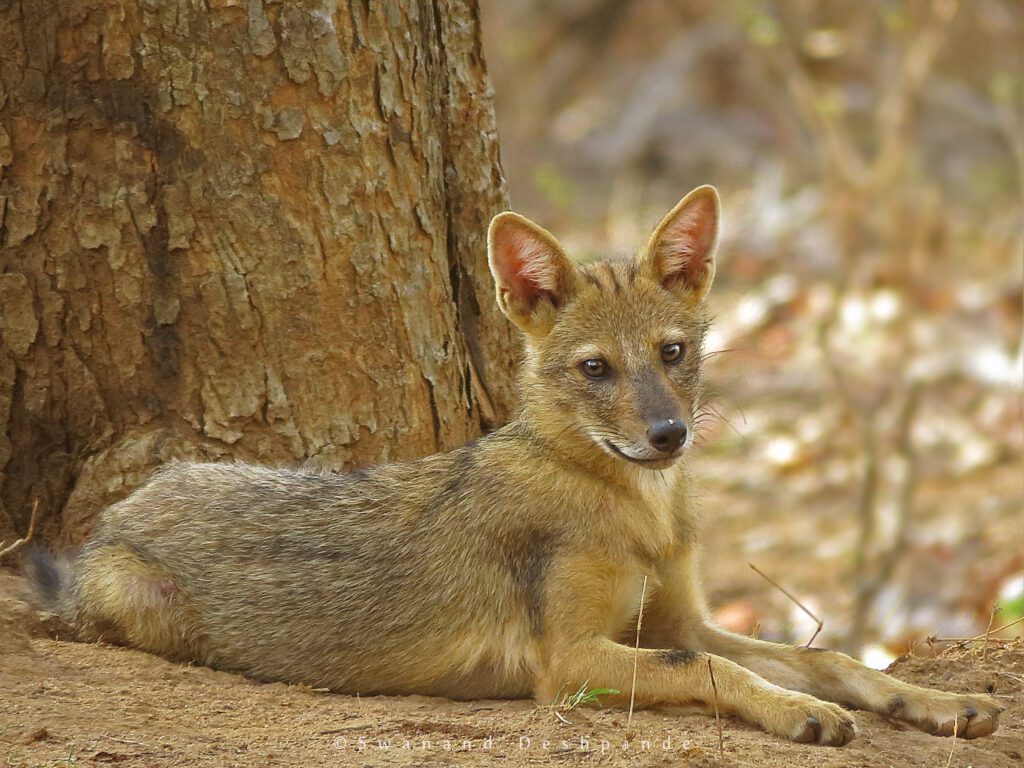
It is believed that the Golden Jackals evolved from Mediterranean Europe’s extinct canine ‘The Arno River Dog’ that existed about 2 million years ago. The skeleton suggests that they are closer to the Golden Jackals than the other jackal species of the world. The morphology also relates more to the Golden Jackals.
The oldest fossil found was roughly about 8000 years old. However, it is said that the golden jackals first came to India roughly about 40,000 years ago, suggesting that this species is relatively new to the world. Scientists believe that Indian golden jackals show the highest genetic diversity. This indicates that India was the origin of the golden jackal’s spread.
Comparison with other Canid species of Central India:


The Golden jackal can often be confused with other members of the Canid family. For most of this section, we will be only looking at the three commonest species that are easily confused and are found along with, or close to the golden jackals.
Golden jackal versus the Grey wolf– Despite its name, the Golden jackals are close to our Grey wolves. Compared to these wolves, the jackals have shorter legs, tail and snout. They are distinctively smaller in size as well. The coat colour might be similar to the wolfs of india in some regions, but commonly they have a beige – yellow coloured coat as compared to the dusky coat in the wolves. The easiest way to differentiate them from the jackals is to look at the tail which is not bushy, but pretty slim.
Golden jackal versus the Bengal fox– Bengal fox is the smallest member of the canid family in India. They have distinctively large ears, an elongated muzzle, and a bushy tail. But the most distinctive way of distinguishing the two is that the Bengal fox has a bushy tail with a black tip at the end, and white ears from the inside.
Golden jackal versus the Wild dog– Usually Indian wild dogs or Dholes are not so easily confused for anything else, thanks to their prominent golden–brown coat.
Hunting & Scavenging:
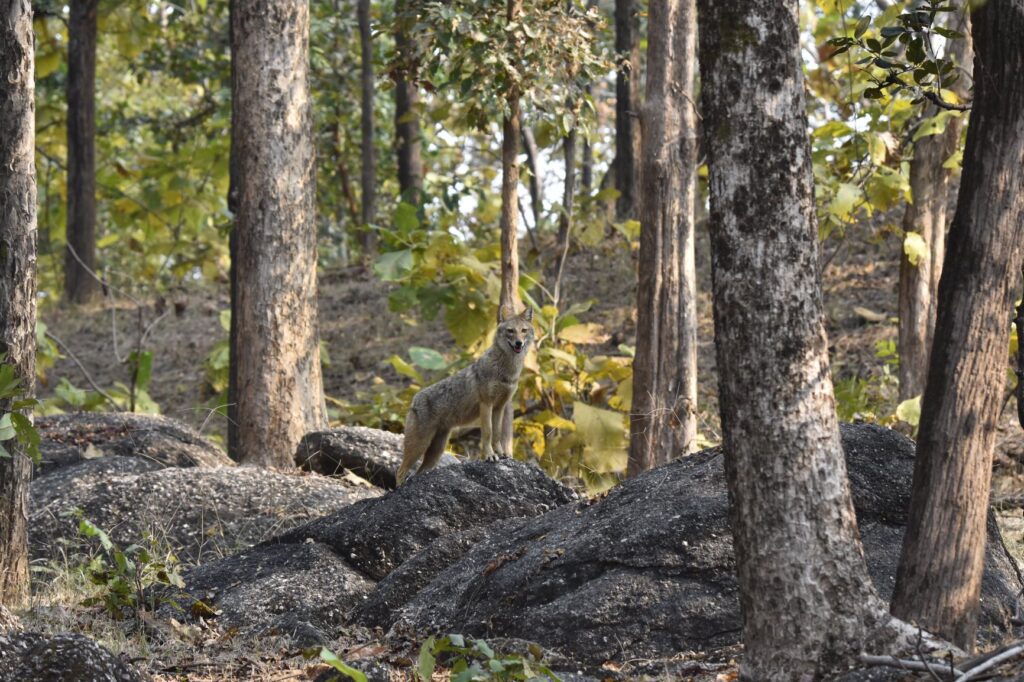
Jackals are big-time scavenging machines. They will salvage whatever they can from a carcass, as quickly as possible. These are mostly tiger/leopard kills. But they are also expert hunters when it comes to small-sized prey like a Chital fawn. They are fast, agile, and resilient chasers. It is easy to say that their success rate of hunting is up there on top as the wild dogs.
Both males and females will hunt together in a strategy. After a successful hunt, the golden jackals try to finish off the most nutritious parts first. These include; the liver, heart, stomach pouch, etc. leaving the rest for later, in case they have to flee. Just like wolves, jackals also return to their cubs, in the dens and regurgitate food for them.
Best places to see jackals:
Golden jackals being highly opportunistic beings are also highly adaptable. Hence, they can also be found in places close to human settlements, mainly rural areas. That being said, Central India’s Kanha , Pench, and Bandhavgarh National Parks are some of the best places to see the golden jackals. Corbett National Park also has a healthy population of jackals.
Written By: Swanand Deshpande, Naturalist at Pench Tree Lodge – Pench
Contact us for bespoke safari experiences.
Email : [email protected] [email protected] Call : +91-11-4013 6332.

